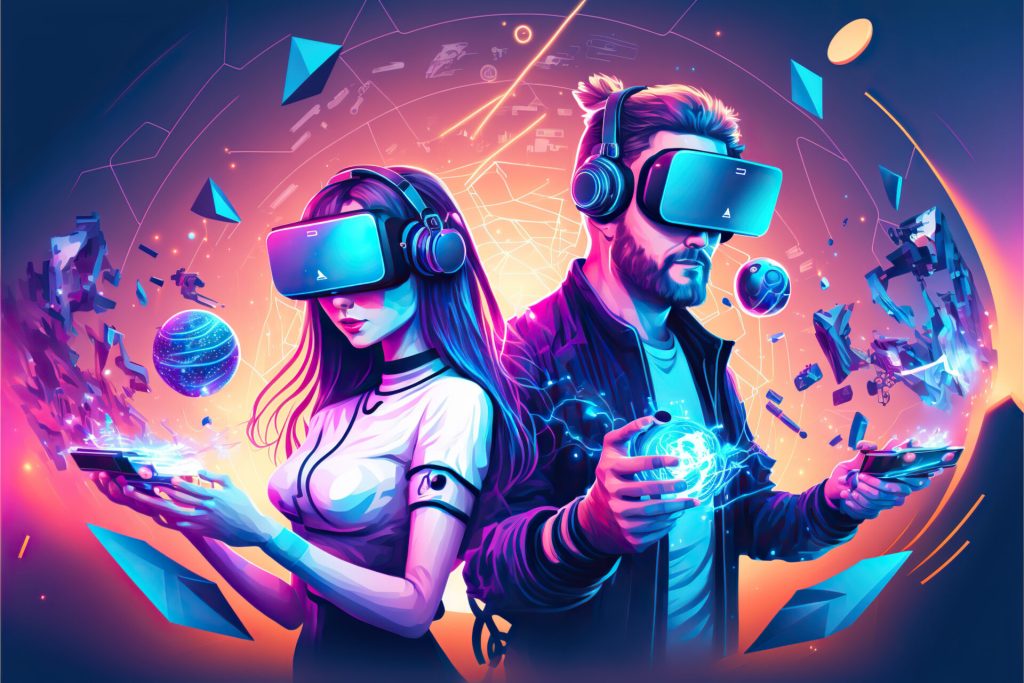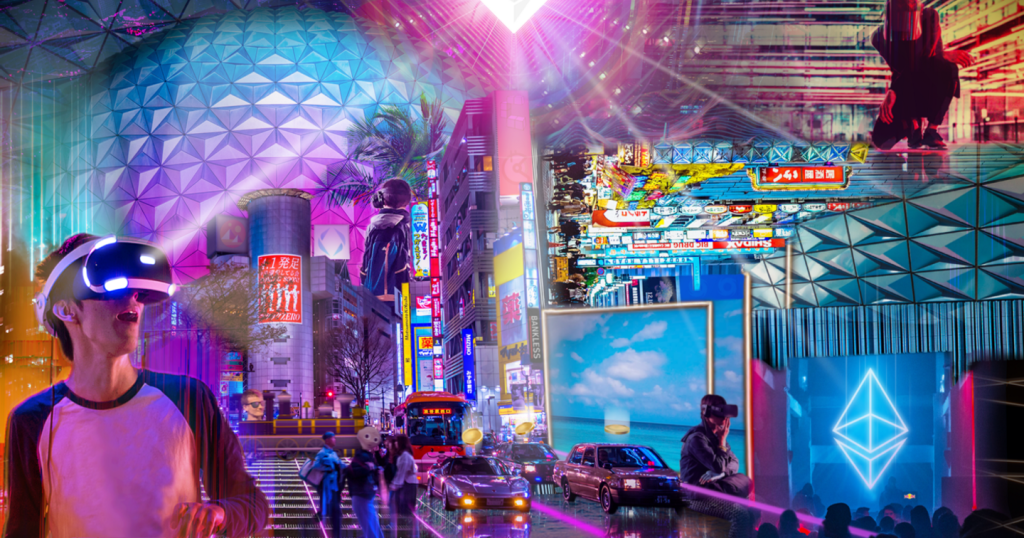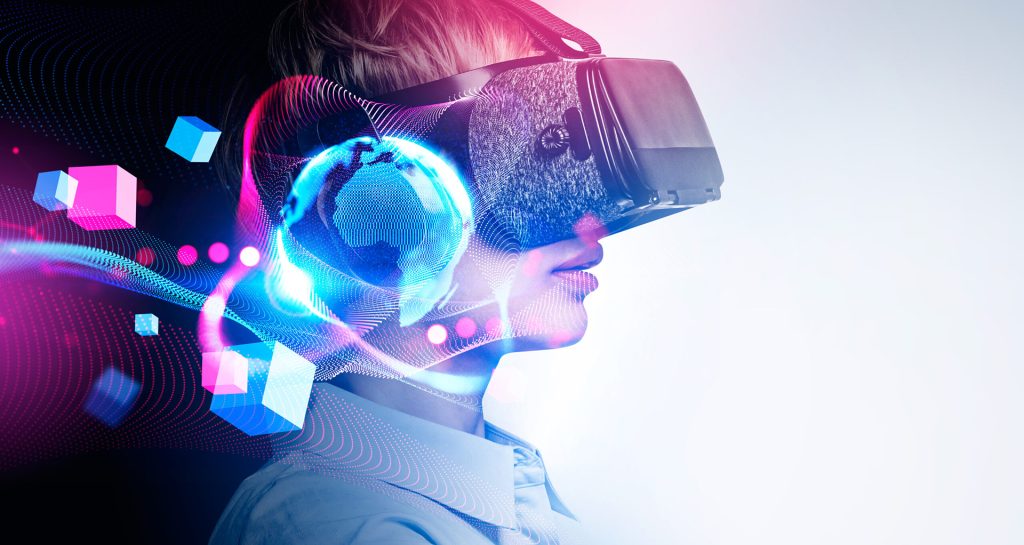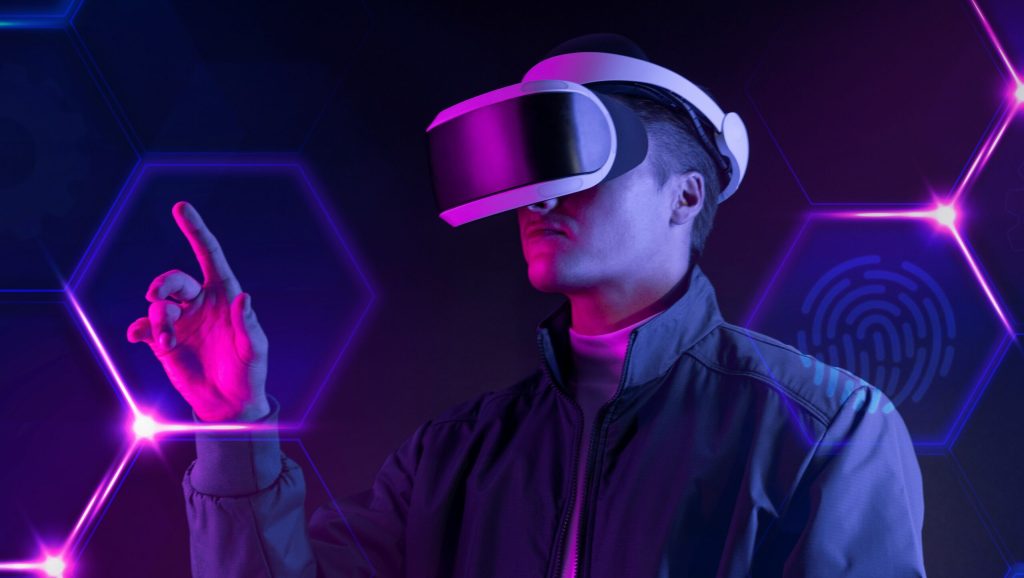The world is becoming increasingly digitalized, and with the advancements in technology, we are witnessing the rise of virtual worlds. One such phenomenon is the concept of “Metaverse”. The term has gained popularity in recent years, especially with the rise of virtual reality (VR) and augmented reality (AR) technologies. However, there is still a lot of confusion surrounding the Metaverse and what it truly entails. In this article, we will delve deep into the topic of Metaverse – what it is, its key features, ecosystem, access methods, potential for growth, and more. So, let’s dive in and explore the virtual this universe.
What is Metaverse?
At its core, Metaverse is a term used to describe a 3D, online, persistent universe that combines multiple virtual spaces. In simpler terms, it is a shared virtual space where users can interact with each other, participate in activities, and explore virtual environments using digital avatars. The concept of Metaverse was first introduced by Neal Stephenson in his 1992 science-fiction novel “Snow Crash”, where he described it as a virtual world that allows users to experience life outside of their physical reality.
With the advancements in technology, what was once just a fictional concept has now become a reality. Metaverse has evolved from being just a gaming platform to a fully immersive virtual universe with endless possibilities. It is not just limited to one virtual world; rather, it encompasses various interconnected virtual spaces, making it a vast and diverse universe.

Basic information about the Metaverse
The Origin of Metaverse
As mentioned earlier, the term “Metaverse” was first coined by Neal Stephenson in his novel “Snow Crash”. He envisioned a virtual world that was not just limited to gaming but also encompassed various aspects of life, such as socializing, commerce, and even education. However, the idea of Metaverse can be traced back to 1974 when CHAOS (Computerized Home Automated System) was introduced by MIT researcher Myron Krueger. It was one of the first systems to allow users to interact with a virtual environment through physical gestures.
Over the years, various other forms of Metaverse have emerged, such as Second Life, The Sims Online, and World of Warcraft. These platforms provided a glimpse into the possibilities of a virtual world where users could create avatars, interact with others, and engage in different activities.
Virtual Worlds vs. Metaverse
It is essential to understand the difference between virtual worlds and Metaverse. Virtual worlds are self-contained environments or games that exist within their own boundaries and do not interact with other virtual spaces. In contrast, Metaverse encompasses multiple virtual worlds, creating a connected and persistent universe.
Another significant difference is the level of immersion. Virtual worlds may offer some degree of immersion, but they are still limited to a screen and a controller. On the other hand, Metaverse aims to provide a more realistic experience through visuals, sounds, and even touch. With advancements in VR and AR technology, the line between reality and virtuality is becoming increasingly blurred.
Evolution of Metaverse
The concept of Metaverse has evolved over the years, from being just a simple gaming platform to a vast and interconnected virtual universe. Initially, it was primarily used for gaming, where users could explore and interact with virtual environments and other players. However, with the rise of social media and online shopping, it has transformed into a platform for socializing, commerce, and even education.
Today, Metaverse is not just limited to a few platforms; rather, it is an ever-expanding ecosystem that includes various virtual worlds, games, social platforms, and even real-life applications. It has become more than just a virtual universe; it is now a way of life for many people.
The Different Types of Metaverse
There are various types of Metaverse, each with its own unique characteristics and features. Some of the most popular ones include:
- Gaming: This type is primarily focused on gaming and provides users with an immersive gaming experience. Platforms like Second Life, World of Warcraft, and Fortnite fall under this category.
- Social: As the name suggests, this type of Metaverse is all about socializing and connecting with others. Users can create avatars, interact with friends, and participate in various activities, making it a virtual extension of our real-life social interactions. Popular examples include Facebook’s Horizon and VRChat.
- Business: This category is focused on commerce and allows businesses to have a virtual presence where they can showcase their products or services. It also enables virtual transactions and meetings, making it a cost-effective and efficient way for businesses to operate. One example of this is Decentraland, where users can buy virtual land and set up their own virtual business.
- Education: With the rise of online learning, educational Metaverse has become increasingly popular. It provides a platform for students and educators to connect and engage in virtual classrooms, enhancing the learning experience. Minecraft Education Edition is an excellent example of such a platform.
Key Features of Metaverse
Now that we have a basic understanding of what Metaverse is let us look at its key features that make it stand out from traditional virtual worlds and other digital platforms. These features define the core elements of it and play a crucial role in creating an engaging and immersive virtual universe.

Main features of the Metaverse
Sustainability
One of the key features of this collective virtual shared space is sustainability. Unlike traditional virtual worlds that require a separate server to function, Metaverse is built upon the internet and only relies on technologies like AI and Blockchain for continued growth. This makes it a sustainable platform that can support a growing number of users without any significant constraints.
Moreover, it also utilizes decentralized systems, making it less vulnerable to crashes or downtime. This ensures a seamless and uninterrupted experience for its users.
Immersion
Another crucial aspect of this is immersion. As mentioned earlier, it aims to provide a realistic experience for its users. This is achieved through advanced graphics, sound effects, and even haptic technology that allows users to feel physical sensations in the virtual world. The level of immersion offered by Metaverse is what sets it apart from traditional virtual worlds and makes it a truly unique experience.
Moreover, with the advancements in VR and AR technology, the level of immersion is expected to increase even further in the future, blurring the lines between reality and virtuality.
Openness
Metaverse is all about creativity and freedom of movement. Unlike traditional virtual worlds that have predefined objectives and limitations, it provides an open platform for users to create and explore at their own will. This openness allows for endless possibilities and encourages users to think outside the box, promoting innovation and creativity.
Furthermore, it also promotes open-source development, allowing users to contribute to its growth and development. This open approach not only fosters a sense of community but also ensures that the virtual universe continues to evolve and improve over time.
Economic System
Metaverse is not just a virtual world; it is also a functioning economy where users can trade virtual assets and engage in transactions using virtual currency. This creates a whole new dimension of possibilities, as users can now earn and spend money within the virtual world.
Moreover, as it grows and becomes more popular, the value of virtual assets and currency is also expected to rise, opening up new avenues for businesses and individuals to invest and profit from the economy.
Ecosystem of Metaverse
To truly understand Metaverse, we need to look at its ecosystem – the various layers that make it possible. These layers work together to create a seamless and immersive virtual universe that provides endless possibilities for its users.
Foundation Layer
The foundation layer of Metaverse is the internet itself. Without the internet, it would not exist, as it relies on connectivity to bring together various virtual worlds and spaces. The internet also allows for real-time communication and interaction between users, making it a truly social experience.
Moreover, the internet also provides access to valuable data, which is essential for the functioning of it. This data can be used to improve user experience and personalize interactions within the virtual universe.
Infrastructure Layer
The infrastructure layer of Metaverse includes hardware and technologies that underpin the virtual world. This includes advanced hardware like VR headsets, motion sensors, haptic suits, and more, that enable users to interact with the virtual environment in a realistic manner.
Apart from hardware, this layer also encompasses various technologies like Blockchain, AI, IoT, and Big Data. These technologies play a crucial role in creating a sustainable and immersive virtual universe by providing security, data processing, and other key functions.
Content Layer
Content is an essential aspect of Metaverse, as it provides users with games, apps, and social platforms that enrich their experience within the virtual world. This layer includes various forms of content, such as 3D games, social platforms, virtual applications, and more, that cater to different interests and preferences of users.
With the rise of user-generated content, the content layer of Metaverse is expected to grow even further, providing a wide range of options for users to explore and engage with.
True Metaverse
The ultimate goal of Metaverse is to create a seamless integration between the virtual and physical worlds, where users can freely move between both without any barriers. This is known as the “True Metaverse” and is the ultimate aim of developers and technologists working on creating the virtual universe. It will not only provide a fully immersive experience but also have real-world applications, making it a part of our daily lives. For example, it could be used for remote work, education, healthcare, and more, blurring the lines between reality and virtuality even further.
Accessing the Metaverse
To access the Metaverse, users need to use specific technologies that allow them to enter and interact with the virtual universe. The two primary methods of accessing the Metaverse are through Virtual Reality (VR) and Augmented Reality (AR).
Virtual Reality (VR)
Virtual Reality is a technology that creates a simulated 3D environment through headsets, gloves, and suits. It immerses the user in a completely virtual world, blocking out any distractions from the real world. This makes it an ideal method for accessing Metaverse, as it provides a fully immersive experience, allowing users to interact with the virtual world in a realistic manner.
Augmented Reality (AR)
Augmented Reality, on the other hand, superimposes digital content over the real world through lenses or displays. This allows users to experience the virtual world while still being aware of their surroundings. AR is currently more accessible to the general public, with applications like Snapchat and Pokémon Go using this technology. However, it is still in its early stages and has limited capabilities for accessing Metaverse.
Potential for Growth
The potential of Metaverse is immense, and with the rapid advancements in technology, it is expected to grow even further in the future. This ecosystem offers endless opportunities for businesses and individuals alike, making it a lucrative market for investment and growth.

The Metaverse holds immense potential and is poised to expand further with ongoing technological advancements
Hardware Industry
One of the primary industries that will benefit from Metaverse is the hardware industry. As more and more people start accessing it, the demand for advanced VR and AR devices will increase, creating a market for hardware manufacturers. This includes companies that manufacture VR headsets, motion sensors, haptic suits, and other gadgets that enable users to access the virtual world.
Moreover, with the rise of 5G technology, the demand for high-speed internet connectivity will also increase, providing opportunities for telecommunications companies.
Content Industry
The content industry is another sector that is expected to see significant growth with the rise of Metaverse. As more users enter the virtual universe, the demand for 3D games, social platforms, and virtual applications will increase, creating opportunities for developers and publishers.
This also includes user-generated content, where individuals can create and sell their own virtual assets, providing a new source of income. Moreover, with the use of Blockchain technology, virtual assets can now be verified and traded securely, making it a valuable market for businesses and individuals.
Economic System
As mentioned earlier, Metaverse has its own economic system where users can trade virtual assets and engage in transactions using virtual currency. This opens up new avenues for businesses to operate and generate revenue within the virtual world. It also provides an opportunity for individuals to earn a living by creating and selling virtual assets or providing services within the virtual universe.
Furthermore, as more businesses start investing in Metaverse, the value of virtual assets and currency is expected to increase, creating a new market for investors and traders.
Conclusion
Metaverse is an ever-evolving concept that has transformed from a fictional idea to a reality. With its vast ecosystem and endless possibilities, it has created a whole new dimension for individuals and businesses to explore. The rise of Metaverse is just the beginning, and with continued advancements in technology, we can expect it to become an integral part of our daily lives in the future. So, buckle up and get ready to dive into this virtual universe.


